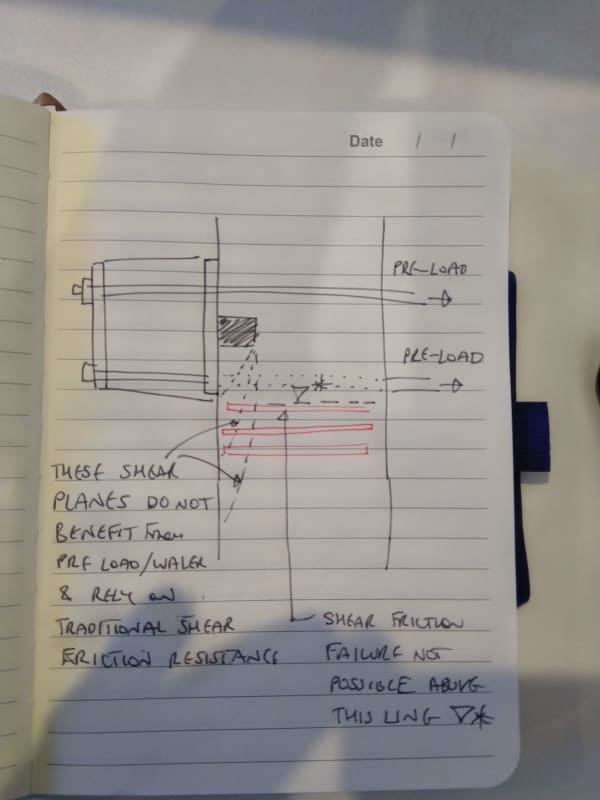Temporaryworks
Structural
thread507-432682
This is a continuation of thread507-432682 which was closed before I had a chance to submit some final comments, especially in respect to comments made by KootK and BARetired in respect to the shear failure mechanisms.
Please also see attached a final photo of the installed truss from inside the building.
I have since moved on from the company and come at this from a learning perspective only.
My questions regards some research I have been doing on the shear friction capacity. The attached pdf shows an American paper than gives a shear friction capacity which utilises the applied pre-load in the capacity. I think that the document alludes to an upper limit of 0.3f'c owing to 'short cracks inclined to the main cracks'. In my case, would this strength limit be compared to the applied stress = total vertical load transferred to the column/sectional area of column?
In addition, do I understand the shear friction planes check correctly:

This is a continuation of thread507-432682 which was closed before I had a chance to submit some final comments, especially in respect to comments made by KootK and BARetired in respect to the shear failure mechanisms.
Please also see attached a final photo of the installed truss from inside the building.
I have since moved on from the company and come at this from a learning perspective only.
My questions regards some research I have been doing on the shear friction capacity. The attached pdf shows an American paper than gives a shear friction capacity which utilises the applied pre-load in the capacity. I think that the document alludes to an upper limit of 0.3f'c owing to 'short cracks inclined to the main cracks'. In my case, would this strength limit be compared to the applied stress = total vertical load transferred to the column/sectional area of column?
In addition, do I understand the shear friction planes check correctly:

